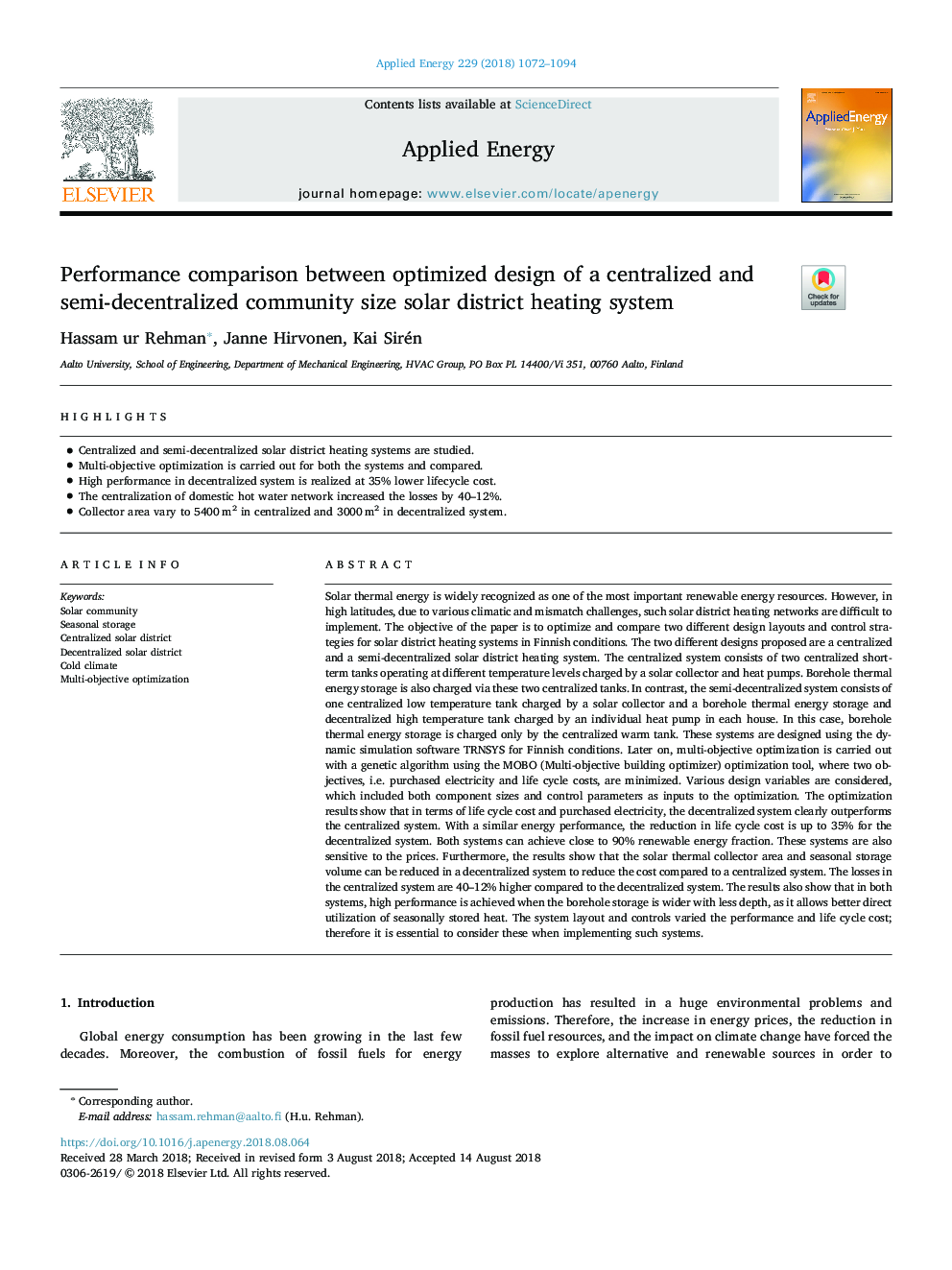| کد مقاله | کد نشریه | سال انتشار | مقاله انگلیسی | نسخه تمام متن |
|---|---|---|---|---|
| 11000850 | 1428062 | 2018 | 23 صفحه PDF | دانلود رایگان |
عنوان انگلیسی مقاله ISI
Performance comparison between optimized design of a centralized and semi-decentralized community size solar district heating system
ترجمه فارسی عنوان
مقایسه عملکرد بین طراحی بهینه از یک مرکز متمرکز و نیمه غیر متمرکز جامعه اندازه سیستم حرارت مرکزی خورشیدی
دانلود مقاله + سفارش ترجمه
دانلود مقاله ISI انگلیسی
رایگان برای ایرانیان
کلمات کلیدی
جامعه خورشیدی، ذخیره سازی فصلی، منطقه خورشیدی متمرکز، منطقه خورشیدی خنثی، آب و هوای سرد بهینه سازی چند هدفه،
موضوعات مرتبط
مهندسی و علوم پایه
مهندسی انرژی
مهندسی انرژی و فناوری های برق
چکیده انگلیسی
Solar thermal energy is widely recognized as one of the most important renewable energy resources. However, in high latitudes, due to various climatic and mismatch challenges, such solar district heating networks are difficult to implement. The objective of the paper is to optimize and compare two different design layouts and control strategies for solar district heating systems in Finnish conditions. The two different designs proposed are a centralized and a semi-decentralized solar district heating system. The centralized system consists of two centralized short-term tanks operating at different temperature levels charged by a solar collector and heat pumps. Borehole thermal energy storage is also charged via these two centralized tanks. In contrast, the semi-decentralized system consists of one centralized low temperature tank charged by a solar collector and a borehole thermal energy storage and decentralized high temperature tank charged by an individual heat pump in each house. In this case, borehole thermal energy storage is charged only by the centralized warm tank. These systems are designed using the dynamic simulation software TRNSYS for Finnish conditions. Later on, multi-objective optimization is carried out with a genetic algorithm using the MOBO (Multi-objective building optimizer) optimization tool, where two objectives, i.e. purchased electricity and life cycle costs, are minimized. Various design variables are considered, which included both component sizes and control parameters as inputs to the optimization. The optimization results show that in terms of life cycle cost and purchased electricity, the decentralized system clearly outperforms the centralized system. With a similar energy performance, the reduction in life cycle cost is up to 35% for the decentralized system. Both systems can achieve close to 90% renewable energy fraction. These systems are also sensitive to the prices. Furthermore, the results show that the solar thermal collector area and seasonal storage volume can be reduced in a decentralized system to reduce the cost compared to a centralized system. The losses in the centralized system are 40-12% higher compared to the decentralized system. The results also show that in both systems, high performance is achieved when the borehole storage is wider with less depth, as it allows better direct utilization of seasonally stored heat. The system layout and controls varied the performance and life cycle cost; therefore it is essential to consider these when implementing such systems.
ناشر
Database: Elsevier - ScienceDirect (ساینس دایرکت)
Journal: Applied Energy - Volume 229, 1 November 2018, Pages 1072-1094
Journal: Applied Energy - Volume 229, 1 November 2018, Pages 1072-1094
نویسندگان
Hassam ur Rehman, Janne Hirvonen, Kai Sirén,
